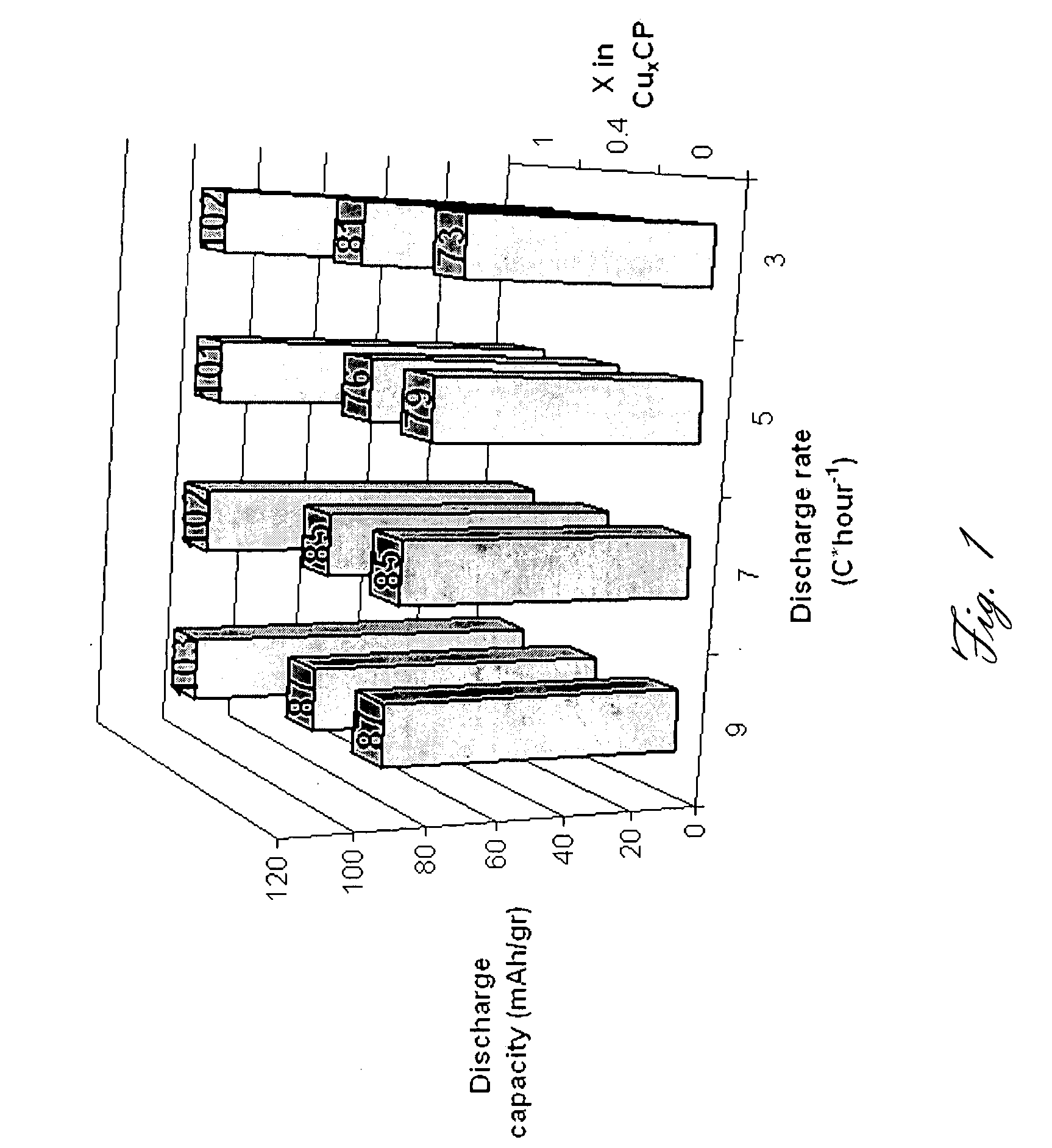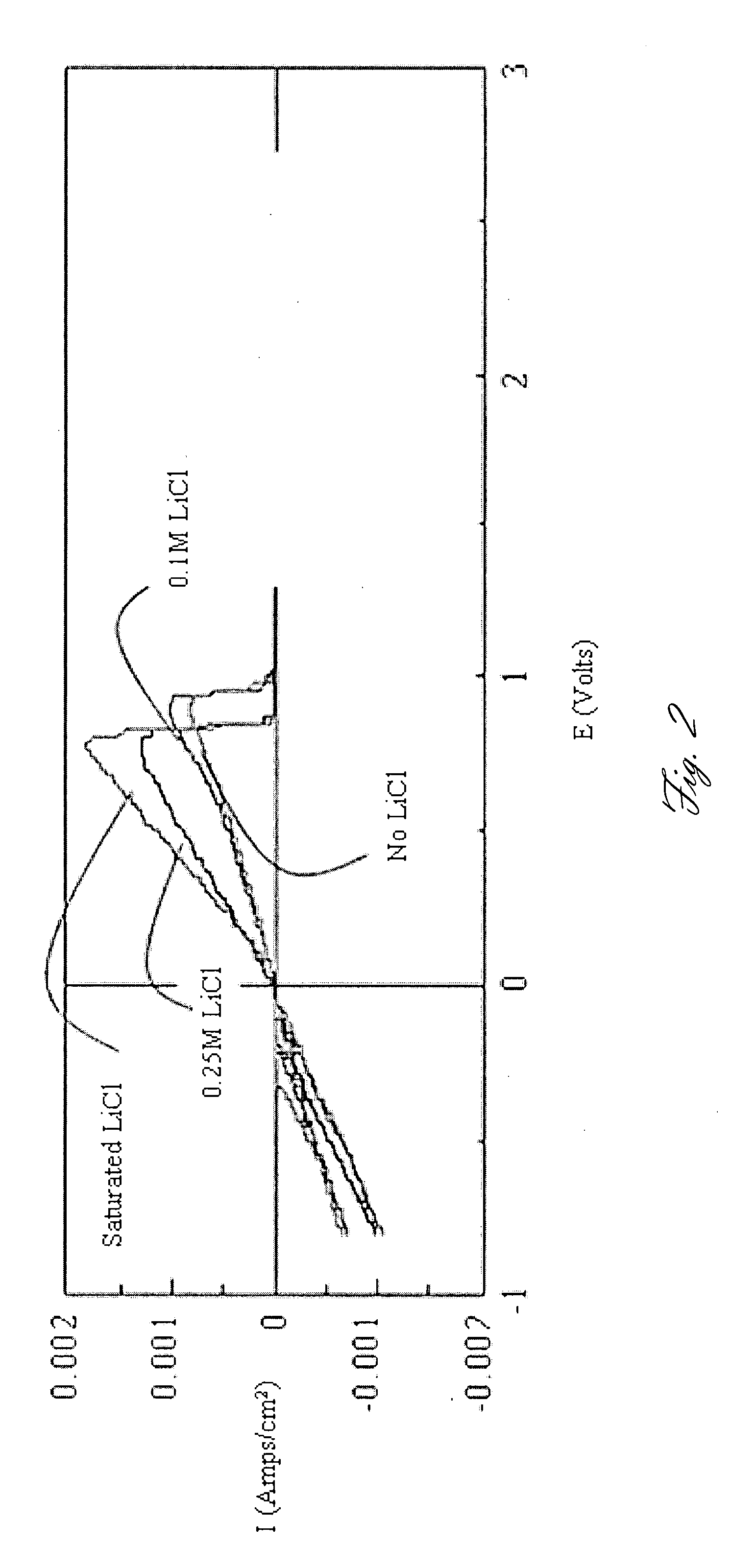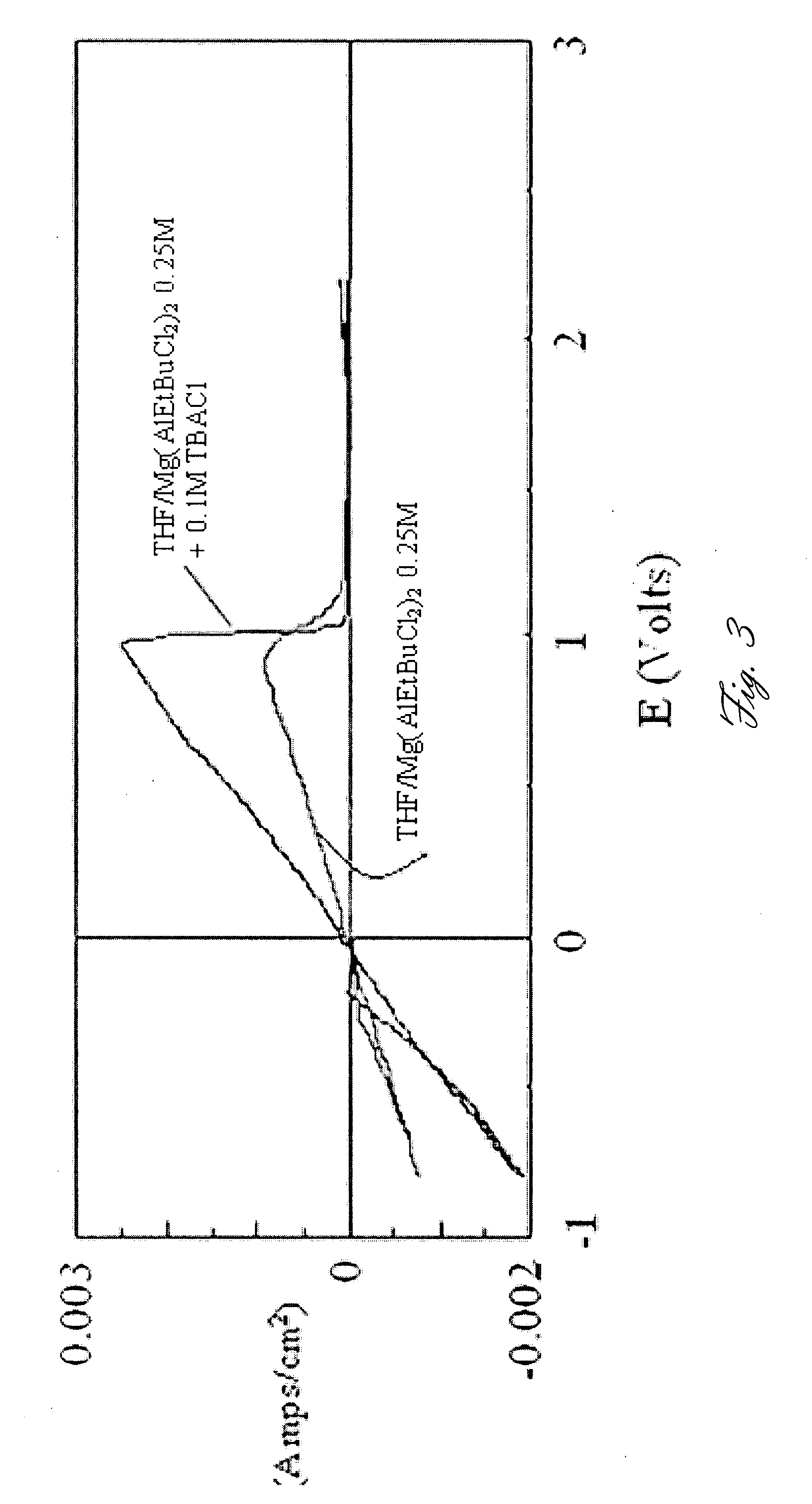Rechargeable magnesium battery
- Summary
- Abstract
- Description
- Claims
- Application Information
AI Technical Summary
Benefits of technology
Problems solved by technology
Method used
Image
Examples
example 1
[0162]An intercalation cathode comprising a Chevrel phase compound represented by the formula Mo6S8-YSeY, in which y is higher than 1 and lower than 2, according to the present invention was prepared as follows: first Cu2.5Mo6S8-YSeY (y=1, 2) nano materials was synthesized. The syntheses of Cu2.5Mo6S8-YSeY (y=1, 2) nano materials were carried out in stainless steel (SS) cells made of Swagelok parts: a ¾″ union part was plugged from both sides by standard caps. The starting materials: MoS2, MoSe2, molybdenum and copper powder or elemental Mo, Cu, S, Se, were introduced into the SS cell under argon atmosphere, and the cell was heated in a furnace. The temperature was raised to 900° C. at a heating rate of 2° C. per minute and was maintained at this high level temperature for 16 hours. The cell was gradually cooled to room temperature. Mo6S8-YSeY (y=1, 2) Chevrel phases were obtained from Cu2.5Mo6S8-YSeY precursors, from which copper was leached in an aqueous HCl solution under bubblin...
example 2
[0163]An intercalation cathode comprising a Chevrel phase compound represented by the formula Mo6S8-YSeY, in which y=0, according to the present invention was prepared as follows: first Cu2.5Mo6S8-YSeY (y=0) nano materials was synthesis. The syntheses of Cu2.5Mo6S8-YSeY (y=0) nano materials were carried out in stainless steel (SS) cells made of Swagelok parts: a ¾″ union part was plugged from both sides by standard caps. The starting materials: MoS2, molybdenum and copper powder or elemental Mo, Cu, S, were introduced into the SS cell under argon atmosphere, and the cell was heated in a furnace. The temperature was raised to 900° C. at a heating rate of 2° C. per minute and was maintained at this high level temperature for 16 hours. The cell was gradually cooled to room temperature. Mo6S8-YSeY (y=0) Chevrel phases were obtained from Cu2.5Mo6S8-YSeY (y=0) precursors, from which copper was leached in an aqueous HCl solution under bubbling air for 7 hours. After leaching, the powder wa...
example 3
[0164]An intercalation cathode comprising a Chevrel phase compound represented by the formula MXMo6S8, in which M is copper (Cu); x is higher than 0 and lower than 2, according to the present invention was prepared as follows: reacting the powdered elements mixture in an evacuated, sealed quartz tube. The reaction is: 2Cu+6Mo+8S→Cu2Mo6S8. The procedure consisted of four sequential stages:
(1) heating to 450° C. for 24 h; (2) heating to 700° C. for 24 h; (3) heating at 1050° C. for 48 h; (4) cooling down to room temperature at the rate of 120° C. / h.
PUM
| Property | Measurement | Unit |
|---|---|---|
| Temperature | aaaaa | aaaaa |
| Temperature | aaaaa | aaaaa |
| Temperature | aaaaa | aaaaa |
Abstract
Description
Claims
Application Information
 Login to View More
Login to View More - R&D
- Intellectual Property
- Life Sciences
- Materials
- Tech Scout
- Unparalleled Data Quality
- Higher Quality Content
- 60% Fewer Hallucinations
Browse by: Latest US Patents, China's latest patents, Technical Efficacy Thesaurus, Application Domain, Technology Topic, Popular Technical Reports.
© 2025 PatSnap. All rights reserved.Legal|Privacy policy|Modern Slavery Act Transparency Statement|Sitemap|About US| Contact US: help@patsnap.com



